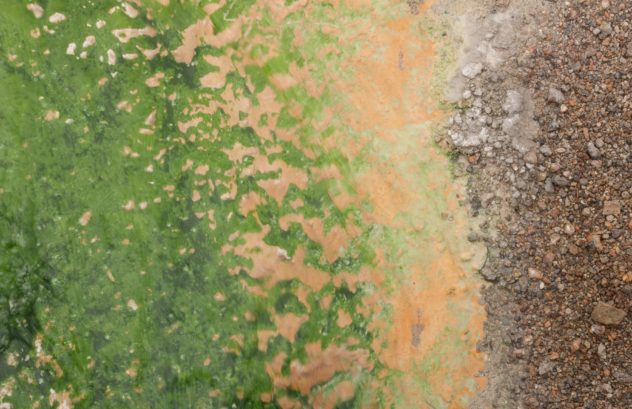Pre-reading questions:
- Do you think there is life on other planets?
- Would you like to go to outer space?
Vocabulary:
- crater /KREY-ter/
- ago /uh-GOH/
- find out /fahynd-out/
- produce /pruh-DOOS/
- organism /AWR-guh-niz-uhm/
[noun] a large hole made by something hitting the ground with force
The earthquake left a big crater in the hotel lobby.
[adverb] back in the past
I used to play the violin a long time ago.
[phrasal verb] to obtain knowledge of something, or to obtain knowledge of someone’s activities, esp. dishonest ones
I was curious to find out what she had said.
[verb] to create something or bring into existence
The company produced many dairy products this month.
[noun] a single living plant, animal, virus, etc.
Some organisms are too small to see with our eyes.
Blue-green algae are found to have survived in a crater left by a space rock that struck Earth millions of years ago. The said crater led to the formation of what is now known as the Gulf of Mexico. Scientists from Curtin University in Australia found out that cyanobacteria must have been present by the time of impact when geologists dug into the crater in 2016. Cyanobacteria are microorganisms that live within plants’ cells and can produce food for the plants. Aside from cyanobacteria, scientists also found other living organisms in the rocks from the tsunami that followed the incident.
True or False:
- The blue-green algae lived in the space rock.
- The crater formed the Gulf of Mexico.
- The cyanobacteria produce food for the plants.
- Scientists from South America found out about the cyanobacteria’s presence.
- Scientists did not find other living organisms within the rocks.
Vocabulary Check:
Complete the sentences by using the words in the box.
| ago | organism | find out | crater | produce |
- Scientists ______ new medicines for the disease.
- The blast caused a huge ______ on the ground.
- Ten years later, I revisited the school to _______ what had changed.
- I started playing soccer two years ______.
- Are antibiotics effective against this _______?
